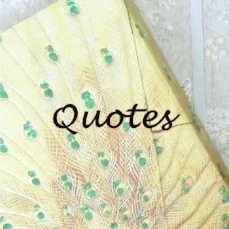Favourites on Friday - Kahlil Gibran
I know Kahlil Gibran mainly as a writer and poet; I did not appreciate how much of an accomplished artist he was.

Born in January 1883 in the town of Bsharri in northern Lebanon, his family moved to America when he was 12 years old. The family were Maronite Catholics; his mother was the daughter of a priest, and his father, her third husband, was an apothecary.

Bsharri Maronite Christianity was started by the disciples of Saint Maron, a 4th century monk, who, together with his followers, left Antioch and settled near the Orontes River. When he died in 410, Maron's followers continued his mission, building monasteries in the mountains of Lebanon.
While still in Lebanon, Gibran received no formal education due to the family’s poverty, but priests who visited regularly, taught him the Bible and the Arabic alphabet. Gibran’s father, already unable to pay gambling debts, was imprisoned for embezzlement following the investigation of the administrator he’d been working for, and the family’s property was confiscated. Gibran’s mother, Kamila, decided to follow her brother, and move to the United States with her children, which she did in 1895 despite the fact that her husband had been released from prison in 1894.
They settled in, what was at the time, the 2nd largest Syrian-Lebanese community in America, in Boston’s South End. Gibran was enrolled in school, and Kamila found work as a seamstress. When he turned 15, Gibran returned to Lebanon to continue his studies there – his mother and older half-brother, Peter, wanted him to learn about his heritage, and not just absorb the Western culture that he was attracted to. While attending a higher-education institute in Beirut, he and a fellow student started a student literary magazine, and he was elected ‘college poet’.
Gibran returned to Boston in 1902, two weeks after his younger sister, Sultana, had died of tuberculosis, aged 14. The following year, he lost his brother, Peter, also to tuberculosis, and his mother, to cancer. His remaining sibling, Marianna, supported both of them with her job at a dressmaker’s shop.

'Portrait of the artist's mother' ~ Kahlil Gibran
Gibran attended art school in Paris from 1908-1910, excelling in drawing and watercolour. He held his first art exhibition in 1904 in Boston, at the studio of Fred Holland Day, a photographer and publisher. Day spent his days tutoring and mentoring the poor immigrant children in Boston, and that was where he and Gibran had first met when the latter was 13-years-old.

Fred Holland Day

Kahlil Gibran - taken by Fred Holland Day
It was at the 1904 exhibition that Gibran met Mary Elizabeth Haskell, a headmistress 10 years his senior. Their close friendship, which lasted till Gibran's death, led to rumours and claims that they were lovers although there is no evidence that their relationship was, in any way, physical. Haskell later married another man, but she continued to support Gibran financially. Using her influence to advance his career, she became his editor.

Mary Elizabeth Haskell
Gibran’s early writings were in Arabic, but after 1918, most of his work was published in English. His best known work is The Prophet, a book of 26 prose poetry essays, published in 1923. Translated into more than 40 languages, it has never been out of print.

Kahlil Gibran died in New York City on April 1h 1931, of cirrhosis of the liver and tuberculosis; he was 48. Although he had lived most of his life in America, he never became a US citizen for he loved his birthplace too much to renounce it. In 1932, his wish to be buried in Lebanon was fulfilled when Mary Haskell, and his sister, Marianna, purchased the Mar Sarkis Monastery in Lebanon, which eventually became the Gibran Museum.

Gibran Museum, and his final resting place
Written next to his grave are the words:
‘ I am alive like you, and I am standing beside you.
Close your eyes and look around,
You will see me in front of you.’
In Lebanon, Gibran is still celebrated as a literary hero. He is the 3rd best-selling poet of all time, after Shakespeare and Lao Tzu. Personally, I think he should also be celebrated for his art.

'Divine World'

'Jesus, Son of Man'

'Medusa'

'Pain'

(Untitled)
